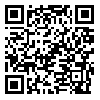Volume 9, Issue 3 (Autumn 2023)
J Health Res Commun 2023, 9(3): 16-28 |
Back to browse issues page
Download citation:
BibTeX | RIS | EndNote | Medlars | ProCite | Reference Manager | RefWorks
Send citation to:



BibTeX | RIS | EndNote | Medlars | ProCite | Reference Manager | RefWorks
Send citation to:
Vakili F, Tabatabai M, Mohammadi M, Salimi Khorashad A. Evaluation of Exposure to Secondhand Tobacco Smoke and its Associated Factors in High School Students in Zahedan in 2022. J Health Res Commun 2023; 9 (3) :16-28
URL: http://jhc.mazums.ac.ir/article-1-907-en.html
URL: http://jhc.mazums.ac.ir/article-1-907-en.html
Master of Epidemiology, Faculty of Health, Zahedan University of Medical Sciences, Zahedan, Iran
Abstract: (2472 Views)
Introduction and purpose: Exposure to secondhand smoke facilitates the occurrence of heart diseases, cancer, and other diseases. The present study aimed to determine the prevalence of secondhand tobacco smoke exposure and related factors among high school students in Zahedan, Iran, in 2022.
Methods: In this cross-sectional study in 2022, 640 high school students in Zahedan were selected via a multi-stage random sampling method. A checklist adapted from the Global Youth Tobacco Survey (GYTS) questionnaire was used for data collection. All checklists were collected in person and through interviews. All data analysis was performed in SPSS software (version 22) using chi-square, independent t-test, and logistic regression tests at a significance level of 0.05.
Results: In this study, a total of 640 students with a mean age of 17.00 ± 0.77 years were examined, 45.2% of whom were boys. Moreover, 58.4% of the studied students were exposed to secondhand smoke. Gender, type of school, type of house, place of residence, and the presence of respiratory disease were not related to secondhand smoke exposure. Cases exposed to secondhand smoke were significantly higher among students living on city outskirts and Baloch ethnicity (P<0.05). Based on the Multiple logistic regression model, the most important predictors of secondhand smoke exposure were parental smoking history and mother's illiteracy (P<0.05).
Conclusion: As evidenced by the obtained results, the prevalence of secondhand smoke exposure in teenagers of Zahedan is relatively high, and it seems that the level of literacy and economic status are involved in the prevalence of exposure.
Methods: In this cross-sectional study in 2022, 640 high school students in Zahedan were selected via a multi-stage random sampling method. A checklist adapted from the Global Youth Tobacco Survey (GYTS) questionnaire was used for data collection. All checklists were collected in person and through interviews. All data analysis was performed in SPSS software (version 22) using chi-square, independent t-test, and logistic regression tests at a significance level of 0.05.
Results: In this study, a total of 640 students with a mean age of 17.00 ± 0.77 years were examined, 45.2% of whom were boys. Moreover, 58.4% of the studied students were exposed to secondhand smoke. Gender, type of school, type of house, place of residence, and the presence of respiratory disease were not related to secondhand smoke exposure. Cases exposed to secondhand smoke were significantly higher among students living on city outskirts and Baloch ethnicity (P<0.05). Based on the Multiple logistic regression model, the most important predictors of secondhand smoke exposure were parental smoking history and mother's illiteracy (P<0.05).
Conclusion: As evidenced by the obtained results, the prevalence of secondhand smoke exposure in teenagers of Zahedan is relatively high, and it seems that the level of literacy and economic status are involved in the prevalence of exposure.
Type of Study: Research(Original) |
Subject:
Epidemiology
Send email to the article author
| Rights and permissions | |
 |
This work is licensed under a Creative Commons Attribution-NonCommercial 4.0 International License. |






